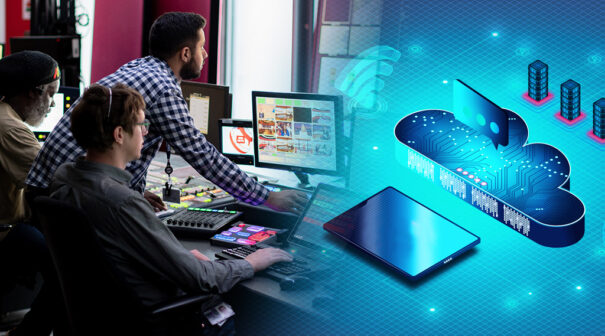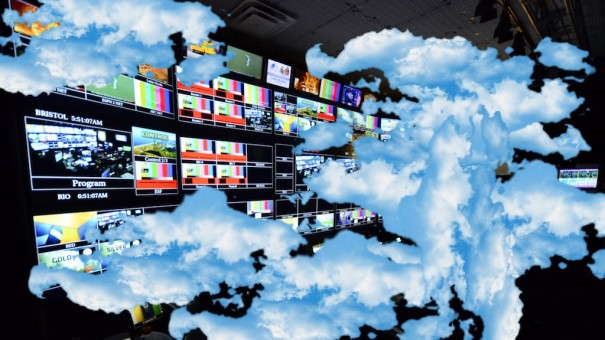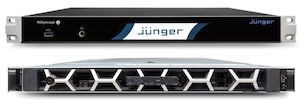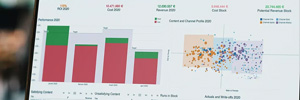Does it make sense to bring MAM and playout to the cloud?
Álvaro Montalbán, director de ventas EMEA de VSN, ayuda a descubrir el estado de la migración a la nube de dos procesos core de la actividad broadcast: MAM y playout.
La nube ya forma parte del día a día de los broadcasters. Quizá no sea aplicada en cada instalación, pero está presente en muchos de los proyectos presentes y futuros de los equipos de ingeniería. Es una variable sempiterna de las hojas de ruta; una posibilidad, por muy contra natura que pueda sonar, palpable.
Su consolidación responde a diferentes variables. Desde que las promesas fueron hechas hace casi más de una década, los broadcasters han atendido a sus oportunidades, mientras que los proveedores han sabido generar expectación y soluciones en forma de nuevos modelos de negocio y optimización de procesos.
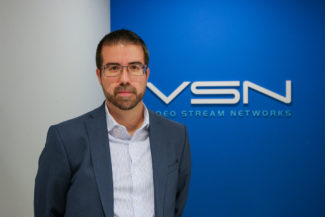 Al margen de los primeros usos a modo de almacenamiento profundo, así como aplicaciones de músculo de procesado (con la prometedora virtualización de procesos en el horizonte), la industria también ha puesto sobre la mesa la integración en procesos híbridos o 100% cloud de la gestión de archivos (MAM) y los procesos de continuidad y emisión (playout). Los primeros más extendidos, los segundos más emergentes, podrían aportar nuevas respuestas a las operaciones diarias de televisiones de alcance nacional, autonómicas o locales.
Al margen de los primeros usos a modo de almacenamiento profundo, así como aplicaciones de músculo de procesado (con la prometedora virtualización de procesos en el horizonte), la industria también ha puesto sobre la mesa la integración en procesos híbridos o 100% cloud de la gestión de archivos (MAM) y los procesos de continuidad y emisión (playout). Los primeros más extendidos, los segundos más emergentes, podrían aportar nuevas respuestas a las operaciones diarias de televisiones de alcance nacional, autonómicas o locales.
Álvaro Montalbán, como experto sobre la materia desde su atalaya en VSN, ayuda a conocer el estado de la cuestión. ¿Tiene sentido, en el contexto español, plantear transiciones cloud en los mundos MAM y playout? ¿Merece la pena esperar a la consolidación de ambas tecnologías?
Cloud: una cuestión personal
El desarrollo del cloud ha avanzado notoriamente durante la última década. Es un concepto que ha ido derribando barreras con el paso de los años, escribiendo sus siguientes pasos en paralelo a las necesidades de los entornos televisivos. Montalbán reconoce los méritos, si bien apunta que todavía queda tiempo para su consolidación: “Quizá se podía pensar que en 2023 y 2024 iba a estar mucho más extendida, pero ha avanzado mucho gracias a la propia industria y a todas las circunstancias asociadas a la pandemia”.
“No es de la noche a la mañana”, reconoce, al tiempo que observa la heterogeneidad de su despliegue. En la actualidad, la adopción de procesos cloud se adapta a la naturaleza de cada agente. Su financiación (pública o privada), alcance o número de delegaciones está marcando su implementación. No existen reglas, ni tendencias. La implementación sigue sus propios ritmos, si bien su filtración en los cimientos del broadcast más tradicional se ha acelerado gracias a la COVID-19: “El hecho de haber tenido que trabajar en entornos virtuales y remotos ha ayudado a empujar la adopción del cloud”.
 MAM en la nube: avances y oportunidades
MAM en la nube: avances y oportunidades
“Una televisión clásica, con sus programas de noticias, entretenimiento y directos, siempre va a tener on premises”, reconoce Montalbán. La visión del MAM 100% cloud, una idea repetida por ciertos agentes de la industria, es inexacta para los flujos de trabajo tradicionales, no así para nuevos modelos televisivos: “Si una televisión cuenta con un contenido completamente en la nube, sí podrían estudiar esta posibilidad”.
En el punto medio quizá no esté la virtud, pero sí una parte importante del mercado. El formato híbrido es la opción más extendida, en tanto que múltiples procesos se realizan en los propios sistemas locales desplegados en las instalaciones y otros en soluciones cloud apoyadas en navegadores. Completando la fotografía, los proveedores de servicio cloud como AWS or Azure aparecen con sus gigantescos sótanos, el paradójico hogar de la nube.
The arquitectura distribuida de muchas de las televisiones autonómicas españolas, que cuentan con distintas delegaciones, favorece el trabajar contra la nube en vez de contra un servidor central.
Los MAM reforzados con las ventajas de la nube son sistemas especialmente relevantes en términos de accesibilidad. The arquitectura distribuida de muchas de las televisiones autonómicas españolas, que cuentan con distintas delegaciones, favorece el trabajar contra la nube en vez de contra un servidor central. “Hay elementos favorables y otros que no, pero una arquitectura distribuida puede ser interesante para muchas televisiones españoles”.
“Es más fácil montar una máquina en AWS que en un servidor físico”.
A nivel de negocio también existen oportunidades, especialmente para aquellas televisiones que se encuentren en un punto de convergencia en cuanto a modelo de negocio (algo bastante extendido dado el momento de redefinición de la televisión que vive la industria): “Si una televisión o empresa audiovisual está empezando, tendrá la posibilidad de emprender una inversión determinada en un sistema cloud en vez de de realizar una inversión concreta en todas sus instalaciones, a la espera de ver cómo evoluciona el negocio. (…) En cuestión de recursos, es más fácil montar una máquina en AWS que en un servidor físico”, apunta Montalbán, no sin antes subrayar la complejidad de adoptar estos modelos en corporaciones pertenecientes a administraciones públicas.
 MAM en la nube: retos a superar
MAM en la nube: retos a superar
Frente a estas oportunidades, y teniendo en cuenta que “a nivel técnico, casi todas las soluciones están preparadas para trabajar en la nube”, todavía quedan desafíos que superar. Uno de ellos es la cuestión del hosting: “Una televisión de tamaño mediano tendrá una librería LTO con su archivo histórico, su almacenamiento en baja en la nube y tendrá que estar recuperándolo. Al final, en la mayoría de las ocasiones se comunicarón con data centers privados. El coste del manejo y gestión de ese contenido será el principal reto”.
Otra cuestión que suele surgir en conversaciones es la cuestión de la privacidad. Es una cuestión crítica que, por mucha certificación de seguridad ISO 27001 que puedan cumplir CDNs y proveedores de software/servicios, la seguridad dependerá de la coordinación de esfuerzos de todos los agentes de la cadena: “Puedes tener una solución completamente sólida a nivel de seguridad y guardar tus activos en un data center de los más seguros del mundo, que si al final un cliente mete un USB en su sistema que ha encontrado por ahí…”.
“A nivel técnico, casi todas las soluciones están preparadas para trabajar en la nube”
En el horizonte, Montalbán divisa una aceleración de los procesos de ingesta y producción remota, incluyendo en la ecuación equipos como teléfonos móviles o portátiles. La agilización de las coberturas que puede proporcionar los procesos MAM en la nube podría ser un factor crítico para optar por su implementación, especialmente en un contexto en el que llegar el primero a la noticia es crucial.
Playout en la nube: puerta para nuevos servicios
Frente al optimismo con respecto a los procesos del MAM en la nube, Montalbán no considera que llevar el playout a la nube sea una prioridad a corto y medio plazo para los broadcasters. Las ventajas operaciones de este proceso, ampliamente publicitado por ciertos agentes del mercado y subrayado en ferias de mercado (quizá mero ruido), no son suficientes para acometer el cambio en la estructura tradicional de la televisión.
El momento en el que se encuentra la industria, con el IP en el horizonte pero con el SDI como el principal estándar en las infraestructuras broadcast en todo el mundo, justifica su postura: “Si tienes tu infraestructura principalmente en SDI, obviamente será difícil que realices una conversión de todo. Hay muchas partes de la cadena que se pueden romper”.
Las ventajas operaciones de llevar el playout a la nube no son suficientes para acometer el cambio en la estructura tradicional de la televisión.
El playout en la nube no tiene mucho sentido dada la realidad de las televisiones españolas en la actualidad. Aun así, Montalbán reconoce que, en función de las capacidades financieras de cada cadena ,se podría explorar la posibilidad de utilizar estos sistemas como back-up or disaster recovery. Otro uso que identifica el responsable de VSN es su utilización para la gestión de canales pop-up o canales FAST: “Son contextos muy dinámicos que se podrían beneficiar de estos procesos”.
¿Quién puede permitirse dar el salto a la nube?
Existen varios casos de éxito que hacen gala de la integración de procesos 100% cloud. Pese a ello, al tiempo que grandes corporaciones estadounidenses y paneuropeas cuentan con el músculo financiero para llevar procesos de alta demanda a la nube, Montalbán ve “complicado” que las televisiones de pequeño y mediano tamaño en España tengan “la mayoría de sus entornos de gestión o continuidad en la nube”. Los costes todavía no son asumibles, y la promesa del UHD y la mayor exigencia en la gestión de contenidos no ayudan a llevar el optimismo a los equipos financieros.
Montalbán considera que es bastante factible que muchas de estas televisiones comiencen a llevar pequeñas partes de sus procesos a sistemas cloud.
Ante esta situación, Montalbán sí considera que es bastante factible que muchas de estas televisiones comiencen a llevar pequeñas partes de sus procesos a sistemas cloud. La propia VSN está impulsando varias de estas opciones, como sus sistemas de tráfico: “Es verdad que muchas administraciones públicas no pueden permitirse gastarse equis cantidad en un sistema de tráfico, pero a lo mejor sí pueden permitirse pagar una cantidad al mes y probarlo”.
“Aquí también entra en juego las dinámicas de innovación de las direcciones técnicas de cada televisión”, traslada Montalbán.
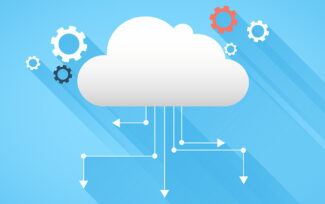 Pasos para una televisión en la nube
Pasos para una televisión en la nube
Es cierto que existen inconvenientes en la consolidación de los procesos core apoyados en la nube entre los broadcasters, pero también que la industria se dirige a ofrecer la posibilidad a las radiotelevisiones de elegir la nube en sus próximas transiciones.
Montalbán, en sus ejemplos a este respecto, reduce las posibilidades de que la opción conservadora gane la batalla entre los ingenieros broadcast: “Los soportes físicos se irán haciendo cada vez menos habituales. Ya van quedando pocas cintas de vídeo, puesto que ya son todo LTO. Y cuando menos LTO haya y más digitalizado esté todo en sistemas cloud, será más viable pasar a procesar todos los contenidos de forma nativa en la nube”, traslada el director de ventas de VSN, aludiendo, a continuación, al IP: “Cuanto menos equipamiento de vídeo y más equipamiento en IP haya, más fácil será que exista una parte de la continuidad en la nube”.
Un artículo de Sergio Julián Gómez
Did you like this article?
Subscribe to us RSS feed And you will not miss anything.



